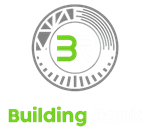Damascus - Al Mazraa - Opposite the back door of the Ministry of Education
Earthquake Resistant Building Specifications
Specifications of earthquake-resistant buildings The foundations, bases and structure must be solid and the engineering design of the building must be in accordance with local and international standards and conditions for earthquakes
.webp)
Earthquake Resistant Building Specifications
Earthquakes do not kill people, but the weak resistance of buildings to earthquakes is what does that. Their foundations may be weak and not closely connected to the ground, or the type of soil on which the building is built is not stable, and therefore any excessive movement of the building during a strong earthquake leads to a real disaster.
Article content:
- What are the specifications of strong buildings.
- - The role of Building Rank in examining the earthquake resistance of buildings.
- Suggested devices for the inspection stages.
- Contents of the final report.
- The future of earthquake resistance of buildings.
First: What are the specifications of strong buildings.
Designing earthquake-resistant buildings is important to ensure the safety of lives and property during earthquakes. Here are some basic specifications that should be taken into consideration when designing an earthquake-resistant building:
1. Foundation and foundation:
Implementing the most appropriate foundations for earthquake resistance includes designing a solid reinforced concrete foundation slab with intersecting strips and freely supported on a medium with a sand pad in the middle that separates the soil from the foundation and the channels surrounding the foundation, which is called foundation isolation.
2. Building structure:
The building structure should be designed to be able to absorb the energy resulting from the earthquake and direct it away from the main columns and walls. This is done by using techniques such as earthquake-resistant columns, shear walls and earthquake-resistant joints.
3. Structural connections:
Strong and tight connections should be provided between all the different parts of the structure, such as columns, walls, ceilings and floors. This helps in distributing the forces resulting from earthquakes better and reducing deformations and damage.
4. Earthquake-resistant materials:
Appropriate building materials should be used that are characterized by high strength and flexibility to withstand the dynamic forces during an earthquake. For example, reinforced concrete and high-strength steel can be used in the structure to increase its bearing capacity.
5. Engineering Design:
The building must be designed according to local and international earthquake standards and conditions. This includes analyzing and testing the earthquake-resistant structure using mathematical models and specialized computer programs.
6. Periodic Maintenance:
Periodic maintenance of the earthquake-resistant building must be carried out to ensure that the structure and materials do not suffer from deterioration that could affect its ability to withstand earthquakes.
These specifications are essential for the design of earthquake-resistant buildings, and an engineer specialized in earthquake engineering and structural design should be consulted to ensure compliance with the requirements specified in the region.
Second: The role of Building Rank in examining the earthquake-resistant capacity of buildings:
When the client requests the company to conduct a study and evaluation of the earthquake resistance of his building, our team of engineers goes to the workplace and conducts a comprehensive examination of the building. The following are some of the works performed by the team:
-
Initial assessment, which is done through:
-
Visual inspection:
-
Structural analysis: This is done by:
-
Performance tests:
-
Floor analysis:
-
Comprehensive examination of materials:
• Studying engineering documents and original designs.
• Reviewing engineering records and previous reports.
This is done by going to the site and conducting a comprehensive inspection of the building from the outside and inside to identify any structural deformities or problems such as deep cracks between the slab and the beams, or deep continuous cracks in the surfaces or the appearance of continuous cracks in the basement columns and retaining walls.
• Using finite element programs to analyze the building's resistance to earthquakes.
• Evaluating all structural elements such as columns, walls and ceilings.
This is done by conducting tests to evaluate the building's response to potential earthquakes.
This is done by analyzing the properties of the soil surrounding the building and its potential impact in the event of an earthquake.
This is done by evaluating the quality of the materials used in construction and their compliance with engineering standards.
These are some of the tests that the team performs with the utmost professionalism, and they provide accurate information about the buildings' ability to resist earthquakes. At the end of the examination, a detailed report is provided on the condition of the building and the repairs that must be carried out.
Third: Suggested devices for the inspection stages:
There are a number of devices, the most important of which are:
- Ultrasonic inspection device to analyze the quality of materials.
- X-ray imaging test, which is done using X-ray imaging devices to detect internal deformities..
- Vibration inspection: by using vibration recording devices and analyzing them to evaluate the impact of vibrations.
- Wave analysis device, which is done using wave analysis programs to understand the impact of seismic waves.
- Metal detector and resonance device to determine reinforcing steel.
- Thermal imaging device to detect changes in concrete temperature.
These devices help provide accurate data when examining the earthquake resistance of buildings.
Fourth: Contents of the final report:
-
Comprehensive evaluation:
-
Problems discovered:
-
Recommendations:
-
Information about materials:
-
Maintenance plan:
-
Follow-up:
Analysis of the inspection results and determining the level of earthquake resistance of the building.
Clarification of any problems discovered in the structure or materials.
Suggestions for improvements or modifications to increase the resistance of the building.
Providing details about the quality and composition of the materials used.
Guidelines for future maintenance to maintain the resistance of the structure.
A plan to follow up on any improvements or changes to the building.
Using these methods and devices, a comprehensive examination of buildings can be conducted to determine their earthquake resistance, which contributes to increasing the level of safety and sustainability of the construction structure.
Fifth: The future of modern buildings:
The continuous development of technology to increase the earthquake resistance of buildings holds enormous potential. Engineers and researchers are constantly exploring new technologies and materials to improve the structural performance of the building during an earthquake, such as:
- Smart structures equipped with sensors that detect vibrations and adjust them in a timely manner.
- Using nanomaterials to enhance the mechanical properties of building materials.
- Advanced computer modeling and simulation to improve designs and predict earthquake behavior.
The development and implementation of these innovative methods promises a good future because earthquakes differ from any other natural disaster due to their unpredictability and the high potential casualty rate.
Conclusion:
The earthquake resistance of buildings begins with attention to the construction from the base to the foundations and the building structure, and it becomes possible for these buildings to withstand earthquakes more effectively, ensuring the safety and security of residents, saving lives and protecting our cities from this disaster.
Do not hesitate to contact us

 العربية
العربية English
English 




Related Information:
Best Types of Real Estate Investment
Many people are looking for many ways to invest their money, and Investing in real estate is considered a good investment and one of the best ways to preserve the value of your money, but it is not without some risk, if the market, the location of the property and the availability of services are not studied, and prices can also rise or fall.
قراءة المزيدWater leaks and Humidity in the Property - Inspection Points and Treatment
Learn with us about the most important points that the company examines, how to determine the causes of humidity without breaking the tiles and using the latest devices available at Building Rank Company, and how to prepare the report by the company’s engineers
Read More